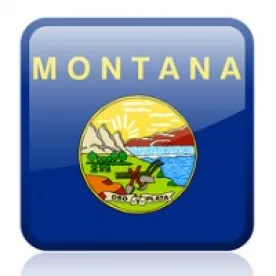On April 20, 2020, the US Supreme Court issued its much-anticipated decision in Atlantic Richfield Co. v. Gregory Christian. In short, the Court held that the Comprehensive Environmental Response, Compensation and Liability Act of 1980 (CERCLA) does not strip Montana state courts of jurisdiction over landowners’ claims for restoration damages; but the Court also held that CERCLA requires the landowners to seek approval from the US Environmental Protection Agency (EPA) for their restoration plans. In other words, the landowners’ state law claims may proceed, but realizing any damages awarded as a result of those claims requires US EPA approval. So, who really won?
Background and State Court Proceedings
In Atlantic Richfield, 98 landowners near the Anaconda Smelter Superfund site in Butte, Montana, brought Montana-law tort claims against Atlantic Richfield Co. in Montana state court seeking “restoration damages” to fund proposed cleanup activities that were not part of US EPA’s remedial action under CERCLA. Specifically, the Montana law under which the landowners brought their claims would allow for restoration damages above and beyond diminution in value damages; that is, under certain circumstances, such restoration damages would compensate a property owner for the reasonable costs of restoring the damaged property to its condition before the injury, even if that amount would exceed the lost property value.
For its part, Atlantic Richfield Co. generally argued in state court that CERCLA preempts the landowners’ claims because CERCLA prohibits any claim that might qualify as a “challenge to a CERCLA cleanup.” The company also argued that the landowners’ claims conflict with CERCLA as it would be impossible to comply with US EPA’s remediation plans (as the company had a settlement agreement in place with the agency) and each individual landowners’ potential plans for remediating his/her property.
Rejecting those arguments, the Montana Supreme Court held that a jury could award the landowners money damages to restore their land, even if the restoration would change or conflict with aspects of US EPA’s remediation plans.
US Supreme Court Opinion
The US Supreme Court primarily addressed, among other issues, whether CERCLA strips the Montana state courts of jurisdiction over the landowners’ claims, and, if not, whether CERCLA requires the landowners to seek US EPA approval for their restoration plans. As to the former, the Court answered in the negative; as to the latter, the Court answered in the affirmative. Chief Justice Roberts wrote for the majority.
With regard to the first question, the Court held that CERCLA “deprives state courts of jurisdiction over claims brought under” CERCLA, but CERCLA “does not displace state court jurisdiction over claims brought under other sources of law.” Critical to the Court’s analysis here were the words “arising under,” because a “suit arises under the law that creates the cause of action.” The Court reiterated that CERCLA gives federal courts exclusive original jurisdiction over all cases “arising under” CERCLA, but according to the Court, the landowners’ common law claims for nuisance, trespass and strict liability did not “arise under” CERCLA, rather they arose under Montana state law. Thus, the Montana state courts retained jurisdiction over the lawsuit. Notably, too, the Court appears to have left open the possibility that in CERCLA-related litigation, state courts could retain jurisdiction over any number and types of claims, so long as such claims are brought “under other sources of law.”
On the state court jurisdiction question, Justice Alito filed a dissenting opinion explaining his view that “it is neither necessary nor prudent” to decide the question now.
With regard to the second question, the Court focused on CERCLA Section 122(e)(6), which provides that “[w]hen either the President, or a potentially responsible party . . . has initiated a remedial investigation and feasibility study for a particular facility under this chapter, no potentially responsible party may undertake any remedial action at the facility unless such remedial action has been authorized by the President.” Therefore, the sub-issue before the Court was whether the landowners were potentially responsible parties (PRP’s). The Montana Supreme Court had determined that the landowners were not PRP’s, but the U.S. Supreme Court disagreed. Here, the Court held that the landowners were PRP’s as they were each an “owner” of a “facility.” Under CERCLA, a “facility” is defined as “any site or area where a hazardous substance has been deposited, stored, disposed of, or placed, or otherwise come to be located.” According to the Court, “[b]ecause those pollutants [from the Anaconda Smelter] have ‘come to be located’ on the landowners’ properties, the landowners are potentially responsible parties.” Thus, as PRP’s, the landowners are required under CERCLA Section 122(e)(6) to seek US EPA approval before undertaking any remedial action on their individual “facilities.”
On the PRP question, Justices Gorsuch and Thomas dissented, generally arguing that the Court erroneously focused on Section 122(e)(6), as that section addresses settlement agreements and the landowners were not parties to any such agreements. Their dissent also equated the Court’s overall decision to “paternalistic central planning”—essentially, questions of policy better left to the other two branches of government.
So, at the end of the day, the landowners can pursue their state law claims – a win for them. And, the US EPA must approve any restoration or remedial work that the landowners undertake as a result of their state claims – a win for US EPA and Atlantic Richfield Co. As we described this case back in February, the Court would be grappling with balancing landowners’ rights against CERCLA authority. Now, it appears the Court decided to split some sort of difference and allow a win for both sides, respectively. That said, as the case is now remanded back to the Montana state courts, only time will tell which “win” prevails.




 />i
/>i
